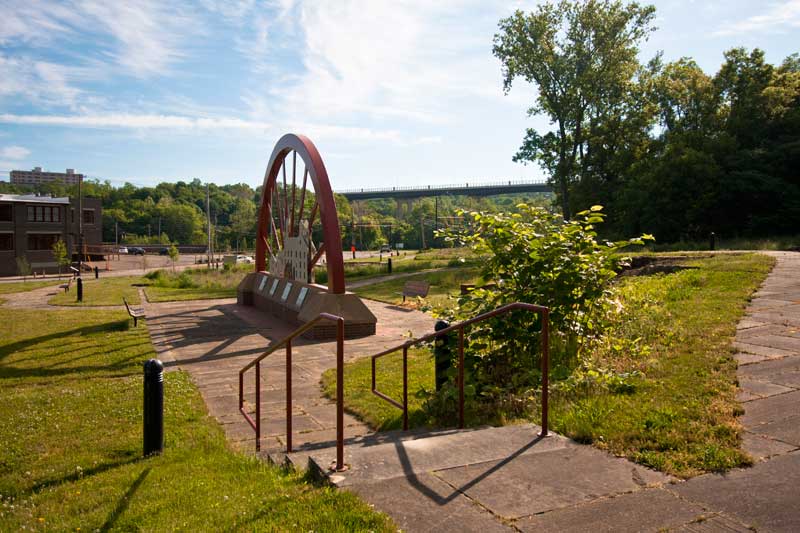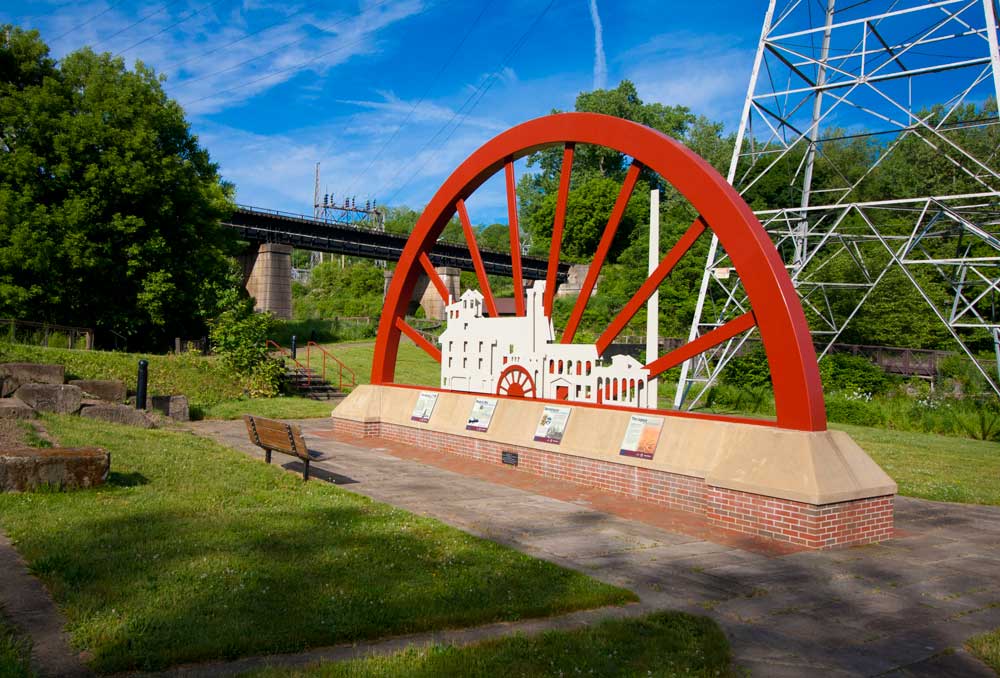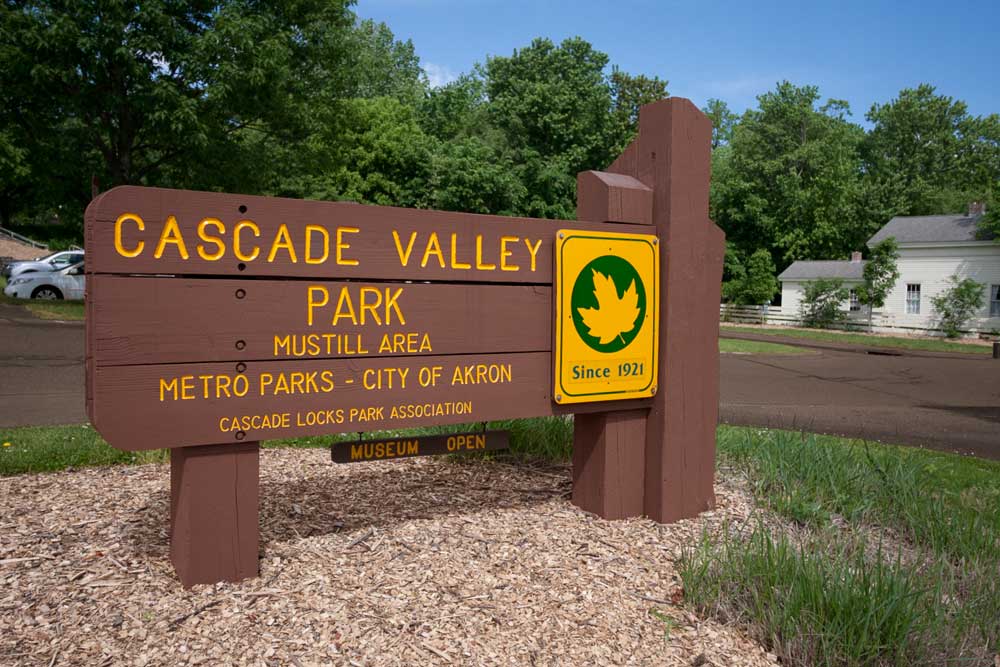
Cascade Locks Master Plan
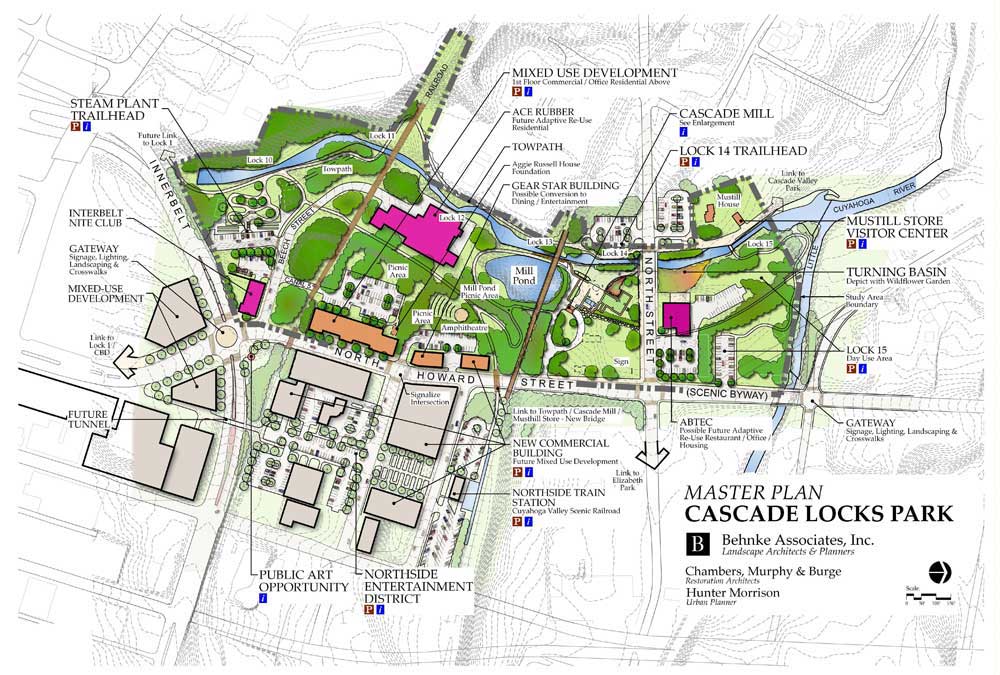
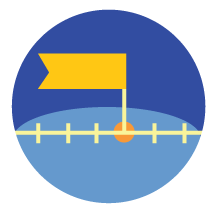
Cascade Locks History
1826
Built during 1826 and 27, the Cascade Locks became the site of the city's first industrial valley. The same topography that presented an obstacle for the canal builders provided waterpower for a string of industries that soon lined the canal. This new village, founded by Dr. Eliakim Crosby, with help from Simon Perkins, was called Cascade. It later became what we now call North Akron. The Cascade Locks were constructed of huge blocks of sandstone, sawed and chiseled to shape. The locks have a width of 15 feet, and they are up to 90 feet long. The source of canal water was, and still is the Portage Lakes.

1832
Parallel to the canal, was the Cascade Race, built in 1832 by Eliakim Crosby. It was this separate mill race which turned the water wheels of the Cascade Mills along with several other flour mills, a woolen mill, a furniture factory, five iron furnaces, a distillery, and other early Akron industries.
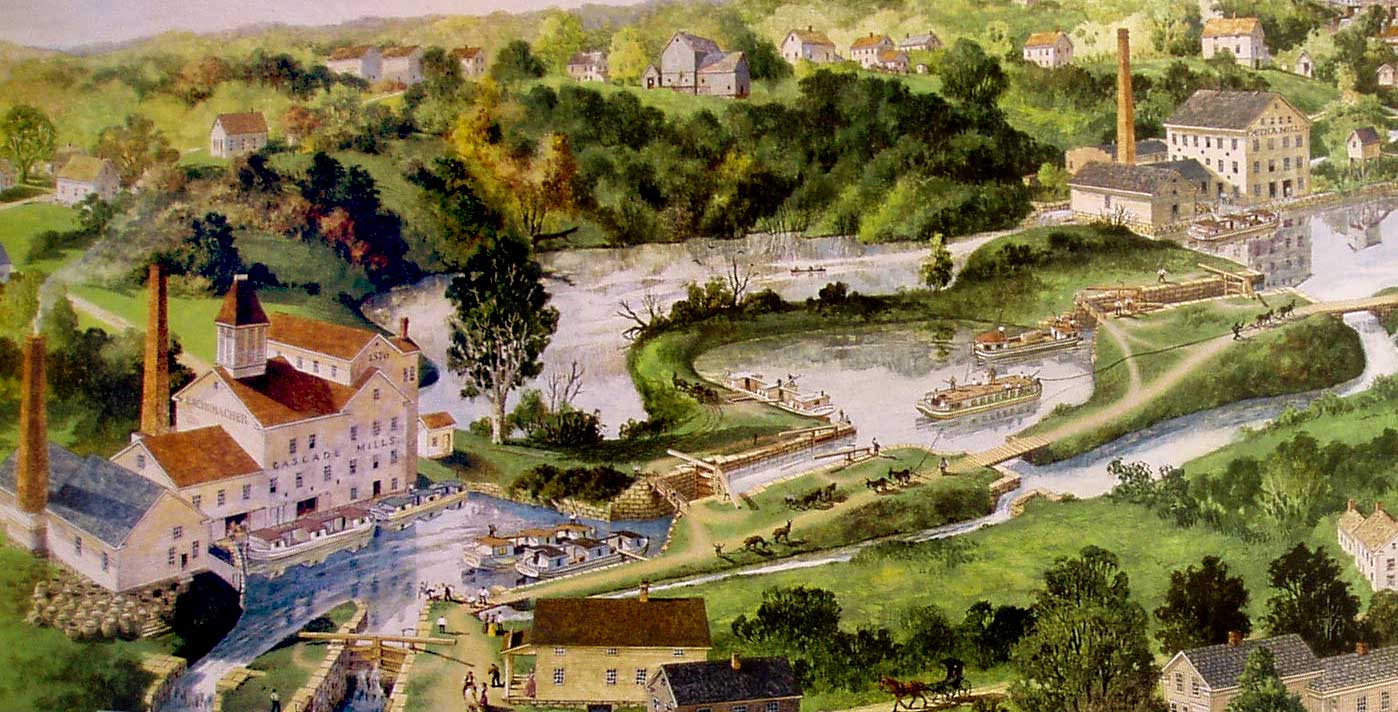
1876
The first building constructed on the project site was The Cascade Grist Mill, it was built by in 1840 by William Mitchell. Ownership changed hands a few times before Ferdinand Schumacher purchased the mill in 1868. By 1876 he had invested heavily in the structure by constructing a state-of-the-art water power system, including a 36 foot "overshot" wheel.

1890
Aetna Mills, sat on Lock 10 at the southern end of the Cascade Locks.
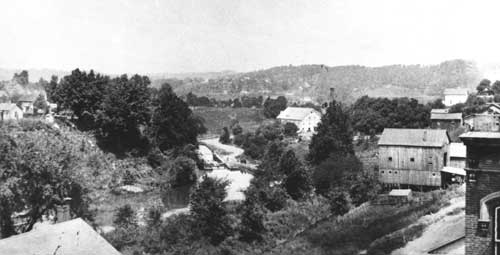
1900
By the end of the century, the only common freight traffic on the Ohio & Erie was coal for the boilers of Lake Erie steamboats. Nevertheless, there arose a move to restore the canal for excursion trade; and in 1906 and 07, a contract was let to the Daley Brothers to accomplish the project. To preserve the 15-foot width of the channel, the Daley workers chipped back the sandstone blocks about a foot deep and then cast a heavy waterproofing barrier of concrete into this wall cavity They also built many new gates.

1913
The Great Flood of 1913 was one of the worst natural disasters in Ohio history. The Akron area received over 9 inches of rain during the week of March 23, 1913. Falling on still frozen ground, the rain could not be absorbed, causing flooding of lakes, rivers, and streams. The Cascade Locks area suffered severe damage to businesses, roads, and bridges. Many homes washed comletelay away. To relieve the pressure from backed up water, some of the locks were dynamited. The damage was beyond repair. The Conservancy Act of Ohio in 1914 set up conservancy districts to promote constuction of water control systems and prevent the type of destruction that occurred in March 1913.

1923
Schumacher Mills in ruins after the flood and the ravages of time.

1990
Stone Arch at Lock 14 dicovered and saved through the efforts of local canal and preservations groups, including Cascade Locks Park Association, Ohio Canal Society, Progress Through Preservation, Summit County Historical Society and the OECCC. The arch was carefully numbered and dismantled for relocation in the Cascade Locks Park.
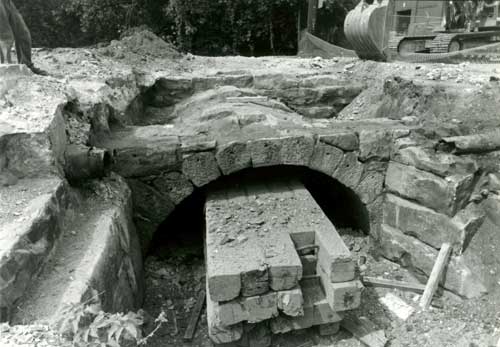
2005
Overgrown and neglected site of the planned Cascade Valley Park before construction begins.

2005
Master Plan for Cascade Locks Park is developed. The Schumacher Wheel as designed by Chuck Ayers.

2006
Construction begins on Cascade Locks Park in 2006.

2009
Cascade Locks Park is completed and ready for the Grand Opening.
